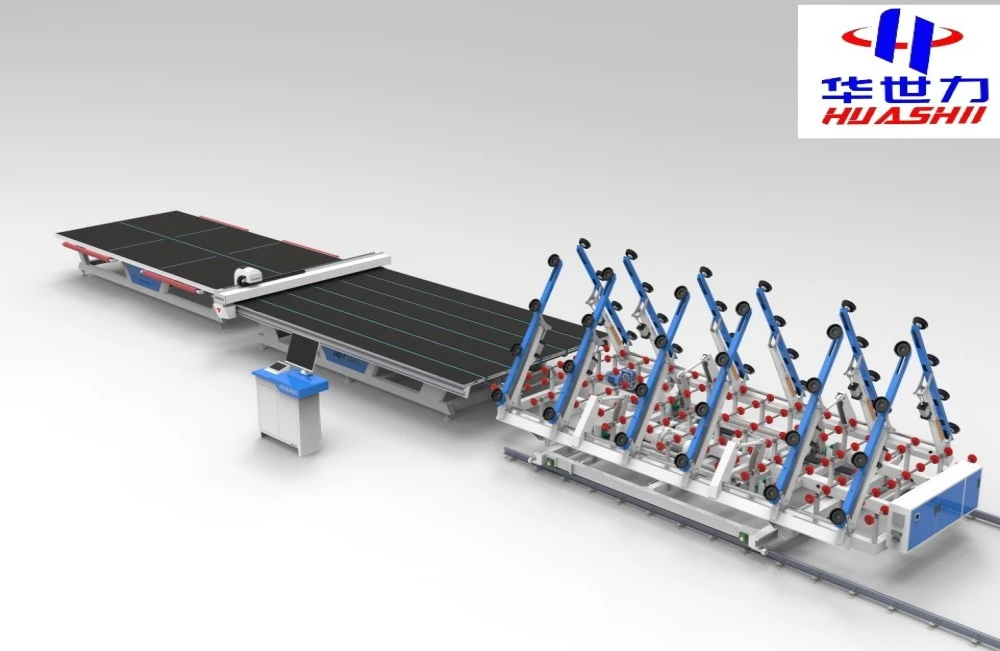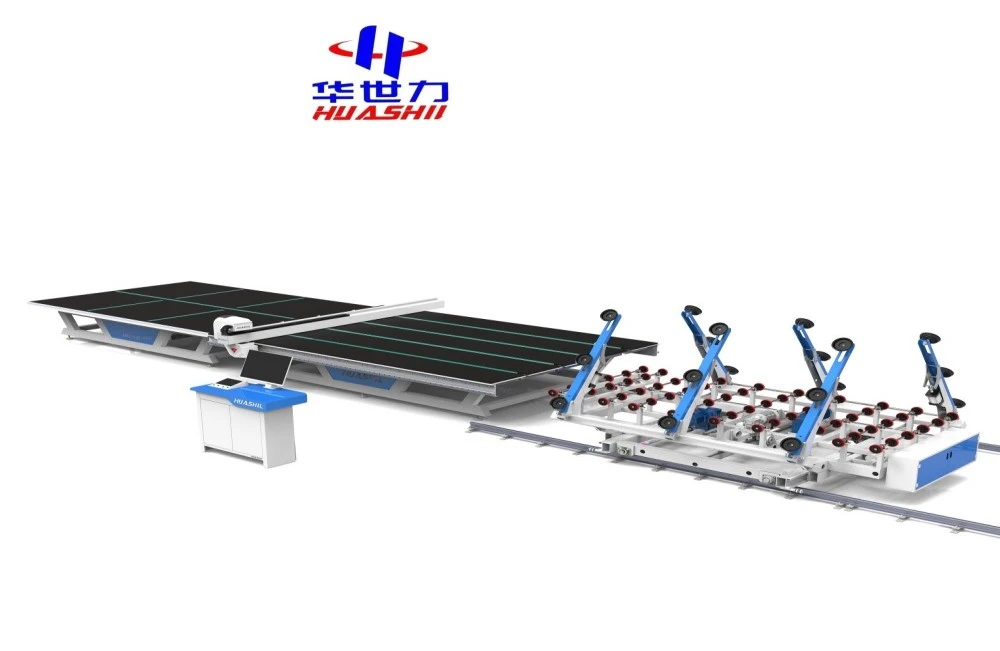In the world of glass manufacturing and processing, safety is paramount. Mobile glass cutting machines have revolutionized the industry, offering unprecedented flexibility and efficiency. However, with great power comes great responsibility. Ensuring the safety of operators and maintaining the integrity of the glass being cut are crucial considerations for any business utilizing these innovative tools. This article delves into the essential safety features that every mobile glass cutting machine should possess, helping you make informed decisions and prioritize worker safety.
Automatic brake systems in portable glass cutters
One of the most critical safety features in mobile glass cutting machines is the automatic brake system. This sophisticated mechanism is designed to immediately halt the cutting process in case of any unexpected movements or irregularities. The importance of this feature cannot be overstated, as it significantly reduces the risk of accidents and potential injuries.
Automatic brake systems work by continuously monitoring the cutting process. They use advanced sensors to detect any sudden changes in speed, pressure, or alignment. When an anomaly is detected, the system instantly engages, bringing the cutting process to a safe and controlled stop. This rapid response time is crucial in preventing accidents that could result in operator injuries or damage to the glass being cut.
Moreover, these brake systems are often integrated with the machine's overall safety protocols. They can trigger additional safety measures, such as retracting the cutting tool or activating warning signals. This multi-layered approach to safety ensures that even if one system fails, there are backup measures in place to protect the operator and the material.

The effectiveness of automatic brake systems in portable glass cutters extends beyond immediate safety concerns. By preventing accidents and minimizing the risk of material damage, these systems contribute to increased productivity and reduced wastage. This makes them not just a safety feature, but also a valuable asset in terms of operational efficiency and cost-effectiveness.
When evaluating mobile glass cutting machines, it's essential to look for models that incorporate state-of-the-art automatic brake systems. The best systems will offer customizable sensitivity settings, allowing you to fine-tune the brake response based on the specific type of glass being cut and the operating conditions. This level of control ensures optimal safety without compromising on productivity.
Why dust extraction matters for mobile units?
Dust extraction is another crucial safety feature that should not be overlooked when considering mobile glass cutting machines. While it might not seem as immediately critical as automatic brakes, effective dust extraction plays a vital role in maintaining a safe and healthy working environment.
Glass cutting generates a significant amount of fine particulate matter. These microscopic glass particles can pose serious health risks if inhaled regularly. Prolonged exposure to glass dust can lead to respiratory issues, skin irritation, and even more severe long-term health problems. This is why a robust dust extraction system is an indispensable component of any mobile glass cutting machine.
An efficient dust extraction system works by capturing glass particles at the point of creation. It uses powerful suction to draw the dust away from the cutting area, filtering it out of the air before it can be dispersed into the surrounding environment. This not only protects the operator but also maintains a cleaner workspace, which is crucial for precision cutting and overall product quality.
The importance of dust extraction becomes even more pronounced in mobile units. Unlike stationary setups, which might benefit from a facility's overall ventilation system, mobile units often operate in varied environments. This means they need to be self-sufficient in managing dust and debris. A well-designed dust extraction system ensures that the machine can maintain a safe operating environment regardless of its location.
When assessing dust extraction systems in mobile glass cutting machines, look for features such as high-efficiency particulate air (HEPA) filters. These filters are capable of trapping extremely fine particles, ensuring that the air quality around the cutting area remains at a high standard. Additionally, consider machines that offer adjustable suction power, allowing you to optimize dust extraction based on the specific cutting task and glass type.
It's also worth noting that effective dust extraction contributes to the longevity of the cutting machine itself. By preventing glass particles from accumulating in sensitive components, it helps maintain the machine's performance and reduces the need for frequent maintenance. This makes dust extraction not just a safety feature, but also a key factor in the machine's overall efficiency and lifespan.

Emergency shut-off features to look for
Emergency shut-off features are the last line of defense in ensuring operator safety when using mobile glass cutting machines. These critical safety components are designed to quickly and completely stop all machine operations in the event of an emergency. The importance of well-designed and easily accessible emergency shut-off features cannot be overstated, as they can quite literally be the difference between a near-miss and a serious accident.
The most basic and essential emergency shut-off feature is the prominent, easily identifiable emergency stop button. This button should be large, brightly colored (typically red), and positioned in a location that is immediately accessible to the operator. When activated, it should instantly cut power to all moving parts of the machine, bringing operations to an immediate halt.
However, advanced mobile glass cutting machines often incorporate more sophisticated emergency shut-off systems. These can include:
- Multiple emergency stop buttons positioned at different points around the machine, ensuring that the operator can quickly stop the machine regardless of their position.
- Pressure-sensitive mats or light curtains that automatically stop the machine if an operator steps into a designated danger zone.
- Automatic shut-off triggers linked to the machine's diagnostic systems, which can detect potential failures or unsafe operating conditions and stop the machine before an accident occurs.
- Remote shut-off capabilities, allowing supervisors or safety officers to stop the machine from a distance if they observe unsafe conditions.
When evaluating emergency shut-off features, it's important to consider not just their presence, but also their effectiveness and reliability. Look for machines that undergo rigorous testing of their emergency shut-off systems. The best manufacturers will provide detailed information about the response times and reliability of these critical safety features.
It's also crucial to consider the restart process after an emergency shut-off has been activated. Well-designed systems will require a deliberate reset procedure, preventing accidental restarts that could put operators at risk. This might include a key-operated reset switch or a multi-step restart process that ensures the machine is only reactivated when it's safe to do so.
Training is an essential component of emergency shut-off effectiveness. Operators should be thoroughly familiar with the location and operation of all emergency stop features. Regular drills and refresher training can help ensure that in the event of a real emergency, operators can react quickly and correctly.
Lastly, consider the integration of emergency shut-off features with other safety systems. For example, activation of the emergency stop might trigger additional safety measures such as locking down moving parts or activating warning lights and sirens. This comprehensive approach to emergency response can significantly enhance overall safety in the workspace.
In conclusion, the safety features of mobile glass cutting machines are not just add-ons or afterthoughts – they are integral components that determine the machine's overall quality and suitability for professional use. From automatic brake systems that provide instant protection, to dust extraction systems that safeguard long-term health, to emergency shut-off features that offer a final safety net, each element plays a crucial role in creating a safe and efficient working environment.
As a business owner or operator in the glass industry, prioritizing these safety features is not just about compliance with regulations – it's about protecting your most valuable assets: your workers. It's also about ensuring the quality and consistency of your output, as a safer working environment leads to more precise and reliable results.

Are you looking to upgrade your glass cutting operations with state-of-the-art mobile equipment that doesn't compromise on safety? At Shandong Huashil Automation Technology Co., LTD, we understand the unique challenges and requirements of the glass industry. Our mobile glass cutting machines are engineered with cutting-edge safety features, ensuring that you can boost productivity without putting your team at risk. With years of experience in automated R&D, manufacturing, and sales, we offer advanced technology, stable quality, and excellent service that has made us a favorite among customers worldwide. Don't settle for less when it comes to safety and efficiency. Contact us today at salescathy@sdhuashil.com to learn how our mobile glass cutting solutions can transform your operations while prioritizing safety at every step.
References
1. Johnson, A. (2022). Safety Innovations in Mobile Glass Cutting Technology. Journal of Industrial Automation, 45(3), 78-92.
2. Smith, B., & Lee, C. (2023). Dust Management Strategies in Portable Glass Processing Equipment. Occupational Health & Safety Quarterly, 18(2), 112-125.
3. Zhang, Y., et al. (2021). Emergency Response Systems in Modern Glass Manufacturing: A Comprehensive Review. International Journal of Industrial Safety, 9(4), 201-218.
4. Brown, D. (2023). The Impact of Advanced Safety Features on Productivity in Glass Cutting Operations. Glass Technology Review, 37(1), 55-69.



